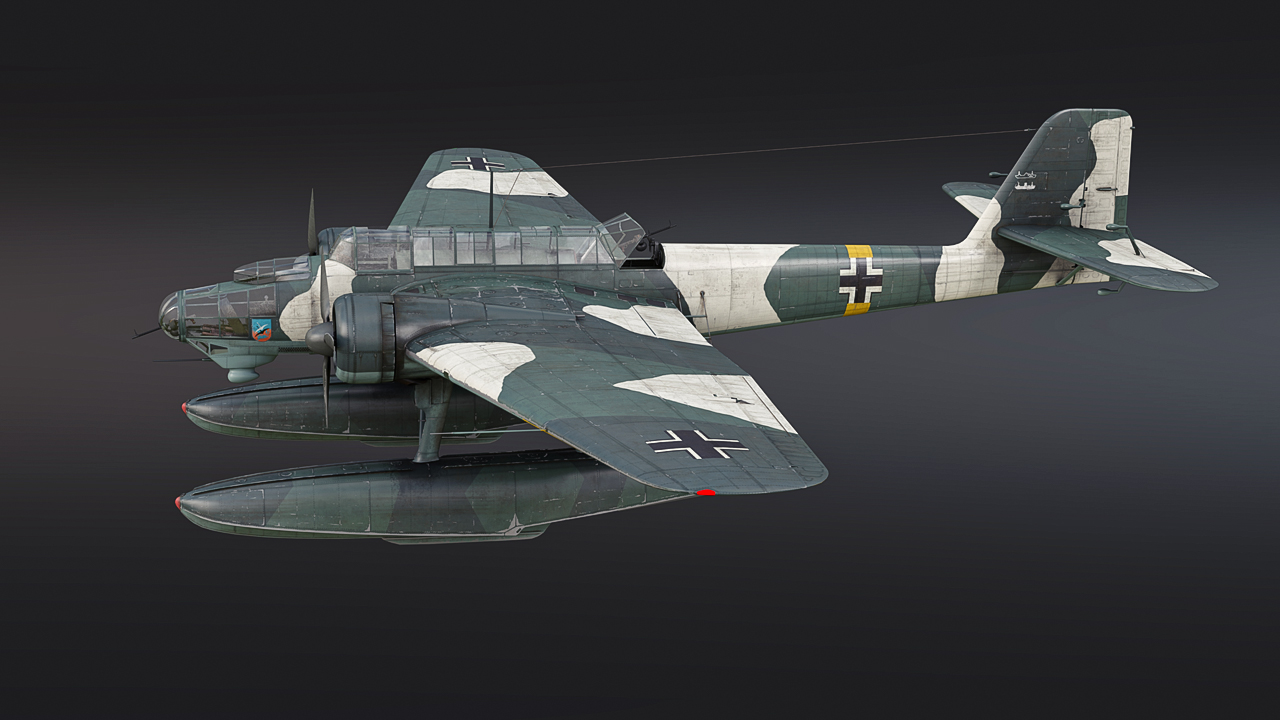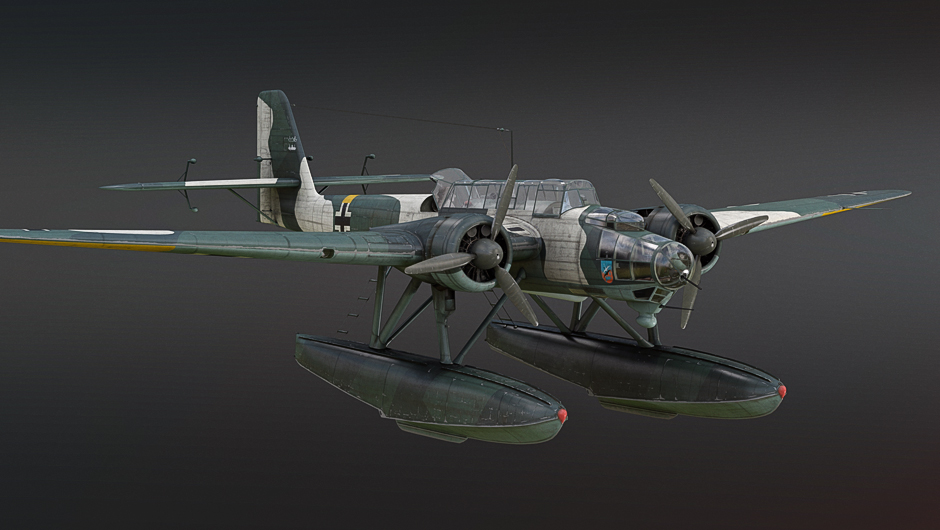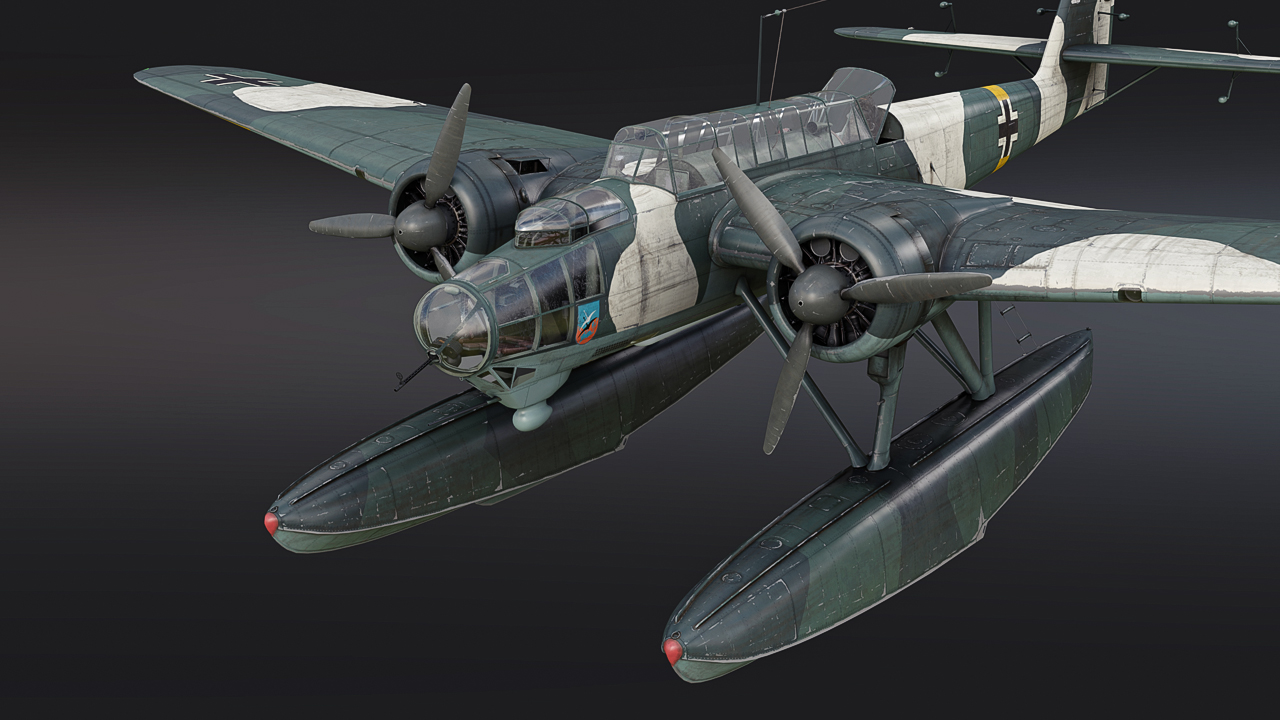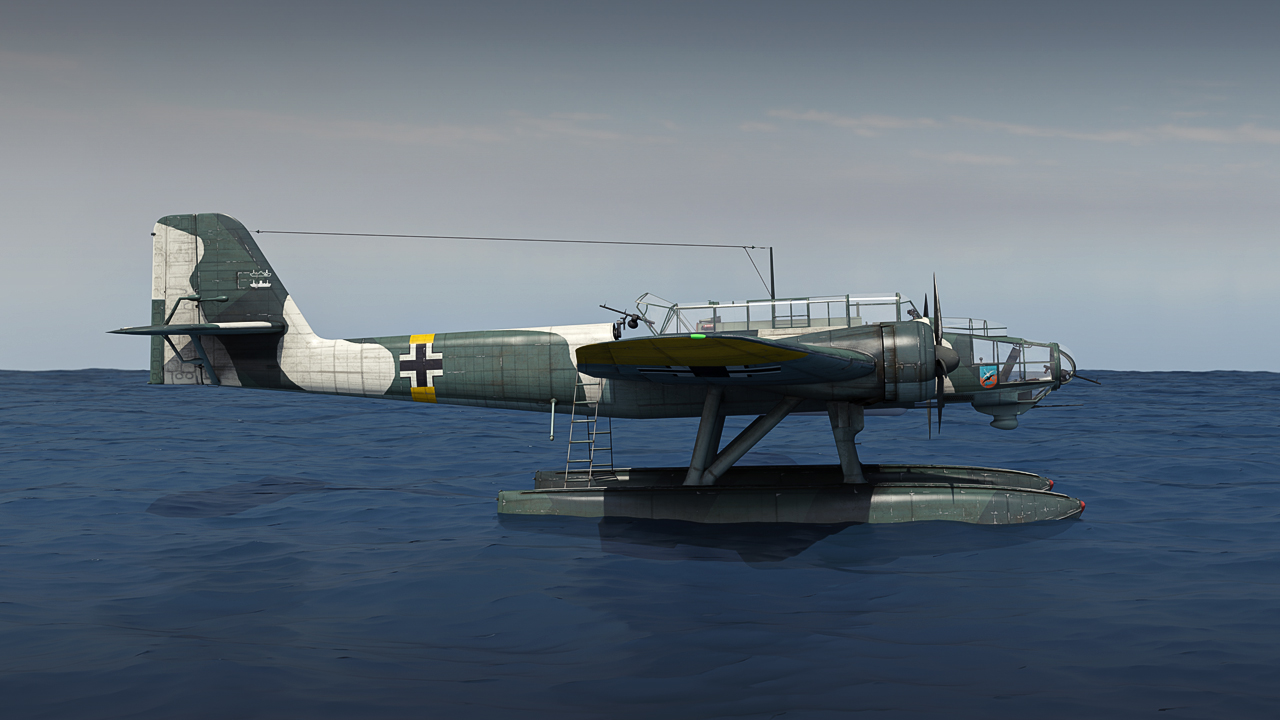
The He 115 is a German twin-engined seaplane, developed by Heinkel in the mid 1930s, which saw widespread use during operations in WWII. Soon, the He 115 will arrive in one of its later modifications to the early ranks of the German aviation tree as part of the next major update “Sons of Attila”!
Briefly: A late modification of a twin-engine German seaplane design, sporting a formidable weapons arsenal for an aircraft of its class.
He 115 C-1, seaplane, Germany, rank I
Features:
- 15mm cannon.
- Versatile ordnance.
- Low speed.
Development of what would become the He 115 commenced shortly after the German Air Ministry issued a set of requirements for a new multi-role seaplane design in 1935. The companies deciding to submit design proposals were Heinkel and Hamburger Flugzeugbau, a subsidiary of Blohm & Voss. Both companies produced prototypes which were subjected to comparative testing with Heinkel’s He 115 being declared the winner of the competition in early 1938. During the testing phase, the aircraft caught the attention of prospective foreign operators, namely Norway and Sweden, both of whom would end up signing orders.
Soon after production ramped up in 1939, the He 115 also entered service with its primary operator, the German Luftwaffe, just in time to take part in the outbreak of hostilities which would kick off WWII. During these early days, the He 115 was particularly used to drop aerial seamines in the English channel as well as conduct raids on Arctic convoys, with the latter operations proving especially successful due to the initial lack of protection for the convoys. Throughout the remainder of the war however, the He 115 would find itself in the typical role of a maritime reconnaissance aircraft and would even be involved in missions to deploy agents behind enemy lines.
Thanks to its rugged design and popularity among crews, the He 115 remained in service even well after WWII, particularly with Sweden who decommissioned their aircraft as late as 1952. In total, over 130 units were built.
Arriving in the upcoming “Sons of Attila” major update, the He 115 will be added to the German aviation tree in one of its later variants: the C-1 modification. Let’s take a closer look as to what this modification has to offer!
Being a seaplane, the He 115 is equipped with a pair of BMW 132K radial engines, producing 960 HP each. As a result, the He 115’s robust engines are less susceptible to damage and can withstand more combat damage before failing, but due to their mediocre power output and the aircraft’s relatively high weight, the He 115 C-1 can only reach a top speed of around 310 km/h at low altitudes.
Naturally, the He 115’s low top speed makes it vulnerable to interception from much faster and more agile fighters. To counter this however, the He 115 is fitted with a pair of defensive machine guns, with one being mounted in the nose turret, and another on the dorsal position. This modification of the He 115 also comes with an additional trick up its sleeve. Namely, engineers fitted the aircraft with a pair of fixed machine guns, mounted on the rear ends of the engine nacelles. While it may prove difficult to score an aerial victory with them, these machine guns may just be enough to catch enemies off guard and make them break off the pursuit!
Did you know? During testing, the He 115 set a total of eight world records for seaplanes during its closed circuit tests of 1,000 and 2,000 kilometres respectively.
So what about the He 115 C-1’s offensive capabilities then? Unlike the original variant of this aircraft, this later modification is fitted with a deadly 15mm MG 151 cannon, mounted on the underside of its nose, capable of shredding light enemy aircraft to pieces with just a few well placed shots. Furthermore, surface targets also won’t remain spared by the He 115. In fact, the aircraft can carry a couple of 250 kg conventional or incendiary bombs or a single 500 kg bomb, as well as a torpedo for naval targets.
The He 115 C-1 will soon be making its way to the German aircraft research tree in the upcoming “Sons of Attila” major update! Also, an early version of this aircraft, designated T-2, will also be added to the Swedish aircraft research tree as well. In the meantime, be sure to follow the news for the latest information regarding the upcoming update. Until then, clear skies and happy hunting pilots!
You can greatly speed up the research of the He 115 C-1 with this premium pack:

- SdKfz 140/1 (Germany, Rank I)
- Ju 87 R-2 (Germany, Rank I)
- 120000 Silver Lions
- Premium account for 7 days
-
4.99
- Store









